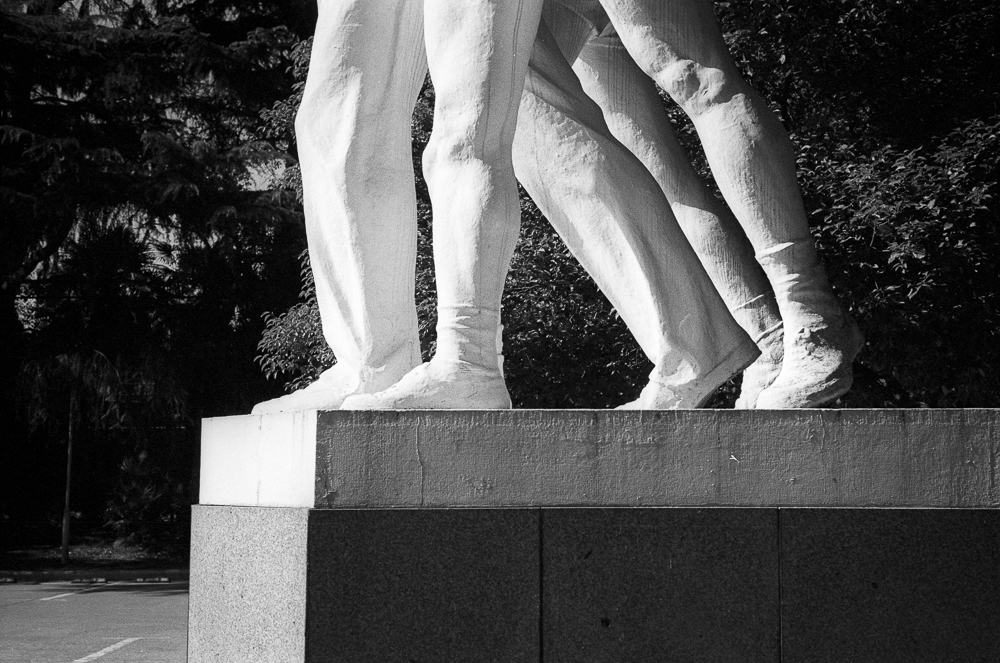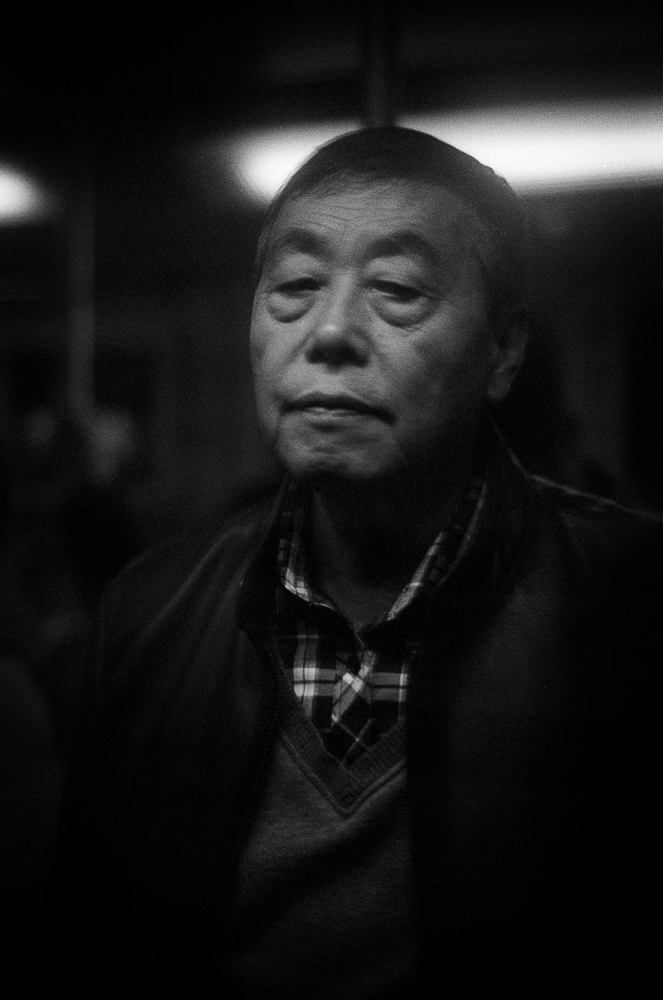Somebody asked me the other day 'what film is in your camera right now'. I answered XP2 Super, and called it one of my favourites. Why?
If you are unfamiliar with film, I can begin with a recommendation: try XP2 because it's easy to use. There's an argument along these lines for all 'medium' speed films of course (400 ISO), film having a notorious 'latitude' (meaning that even under- or over-exposed frames will print to some degree of use). XP2 is especially forgiving, it absorbs extreme highlights and reproduces them as kind light greys rather than blocked-up paper whites. Indeed, XP2 thrives on generous exposure; one of its other qualities being that the grain appears most pronounced in the shadows - the reverse of traditional emulsions like HP5 plus.
To ease of use we can add convenience. XP2 is processed using colour chemistry, something that you can still find in many places on the high streets of the UK (though, alas, diminishingly so - kudos to Boots and Frosts chemists in my locale). I am a pretty slow photographer, so my shots build up over time. I really enjoy the fact that I can get a film developed whilst out and about shopping, pick it up a little later, enjoy 6x4inch proof prints, and select which frames to work on in earnest in the darkroom another day. I should add for completeness that I am referring to 35mm, shot in a rangefinder.
Ilford materials are developed to work well together, and I enjoy the look of XP2 printed on Ilford Warmtone Multigrade Fibre Based paper. I want to say that there is a luminosity to XP2 that this paper allows to shine. I strongly suspect that the aforementioned forgiving nature of the film makes for a generally easier ride in the darkroom. Some may read this as a lack of control (developed in colour chemistry, by someone else, remember), but my experience is that even when darkroom controls are limited, they are plentiful.
Scanned XP2, especially when dust reduction or grain suppression software is applied, can look somewhat 'digital', i.e. very clean, almost 'waxy'. The behaviour of the grain mentioned above plays a part here too. If you dig into and lighten those shadows too much unpleasant textures can emerge (of course, all this is subjective, you may want to do that). Economical Leica Monochrom anyone? One could get a second hand Leica M6, a Nikon Coolscan film scanner, a couple of rolls of XP2, and satisfy both digital and darkroom black and white yearnings.
One last thought. Following from my own experience and the wise words of others, begin by rating XP2 Super at 200 for general work (or 400 for low light), but change your camera to 100 when in bright, contrasty light. This allows the shadows to receive adequate exposure, in the face of your camera's light meter which will be compensating for the abundant bright areas. Highlights receive 'too much' exposure using this tactic, but recall that this doesn't matter because XP2 doesn't 'blow out' like digital. This is XP2 Super.



































